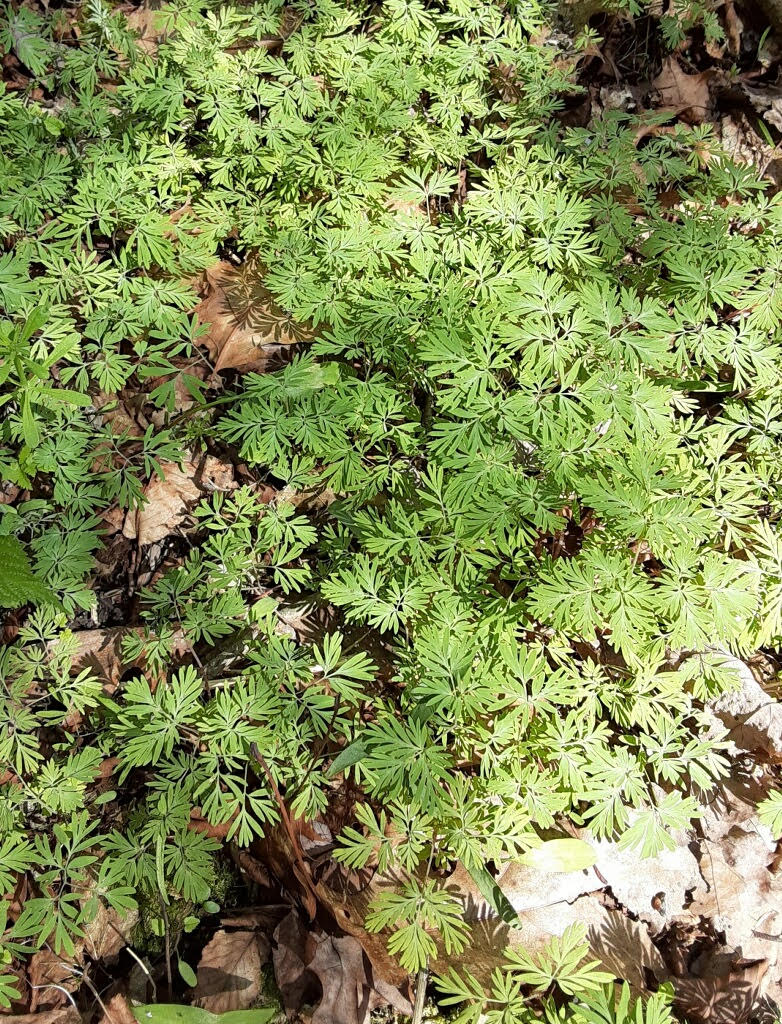By, Susan Sprout
Lovely and delicate Squirrel Corn, Dicentra canadensis, is blooming now! Look for it in rich woodlands with nearby streams. I found mine near a small run, down over a bank, along a dirt road. My husband, once again, hearing, “Oh! Oh! Quick, stop the truck. I gotta get a picture of this!” Large colonies were growing in the dappled sunlight that filters down through the upper canopy during the day.

The flowers got my attention first. They looked like Dutchman’s Breeches, but the closer I got, the more they resembled small white Bleeding Hearts. If you are familiar with the garden variety Bleeding Heart blossoms, you know they are really pink and have spit-apart heart shapes that dangle from an arching stem. The Squirrel Corn flowers, cream or very pale pink, are arranged the same way, hanging down on a smooth, arching stem, several inches above the light green foliage. The leaves are sort of a triangle shape, divided and re-divided into narrow segments, giving them a lacy effect. In order to correctly identify this native plant, I teased its roots apart to look for the physical characteristic responsible for its common name – a small group of attached tubers that resemble kernels of corn or small yellow peas – and then carefully replanted them. Yeah! Squirrel Corn!

After fertilization, drooping seed capsules with flattened, oval shapes will form and split into two parts releasing the seeds. Dicentra, the genus name of all three plants – Dutchman’s Breeches, Squirrel Corn and Bleeding Hearts – means “two spurs” which they all have! They are members of the same family. I can’t say which one right now because they are listed in two different ones, Poppy Family and Fumitory Family, depending on the resource!

All parts of Squirrel Corn are poisonous and can cause skin irritation after contact with cell sap. In fact, after I dug around to check the roots, my fingers itched for a bit. Hand sanitizer helped with that. (Silver lining of the Covid cloud…we never used to carry it in the truck before!) These plants are native from southeastern Canada down through northeastern and eastern United States. They attract butterflies and bees, songbirds and small mammals (squirrels?). They appear to be resistant to deer and rabbits.

